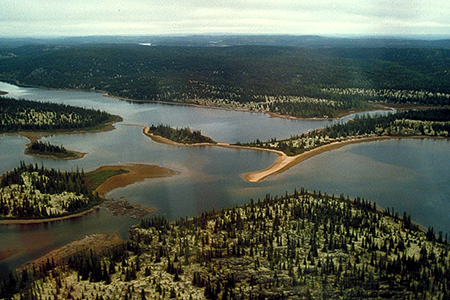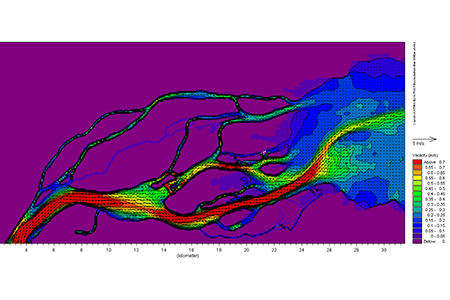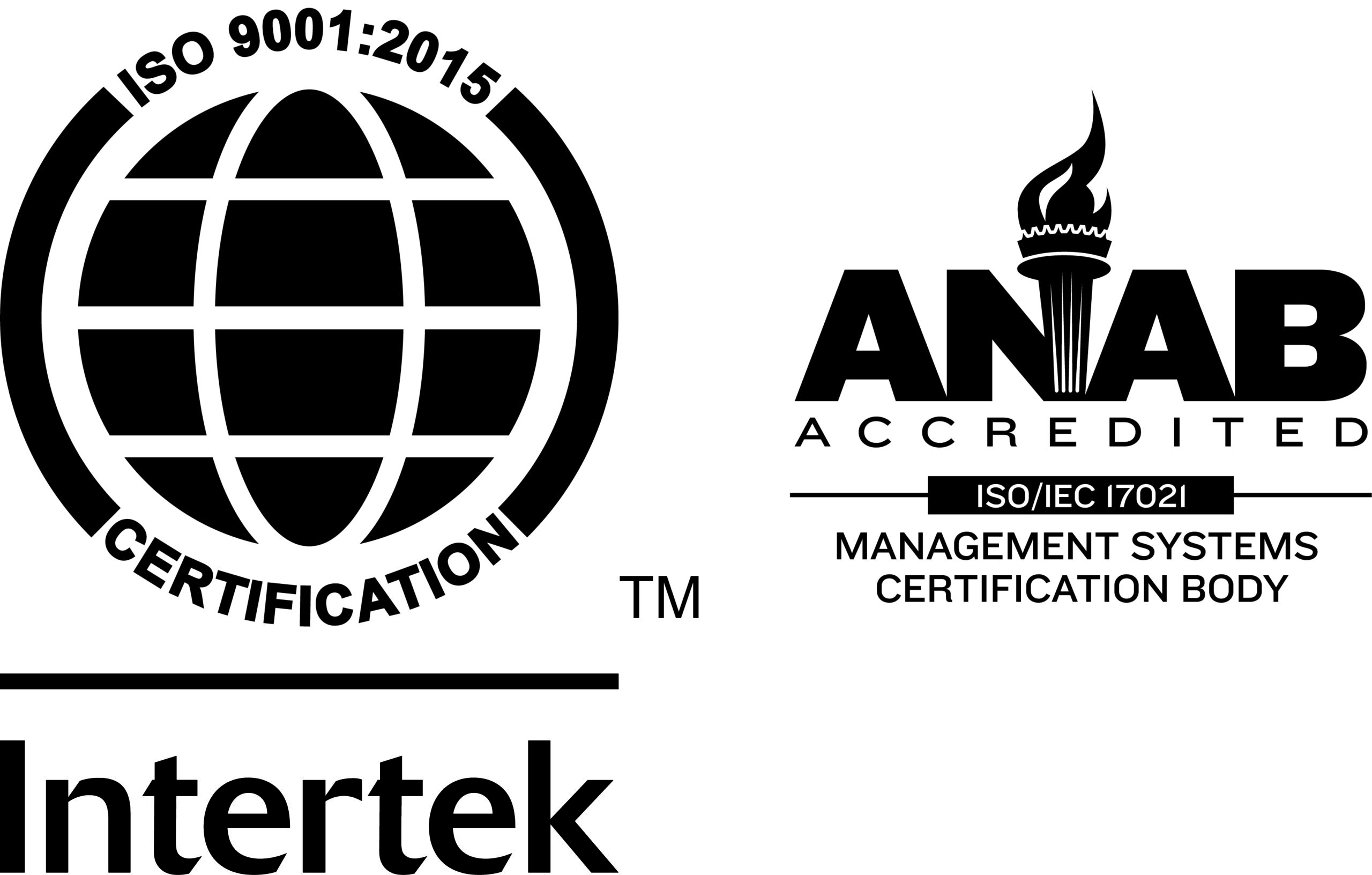Open Channel Hydraulics

The LaSalle Consulting Group is active in all fields of open channel hydraulics. Typical examples of studies carried out include definition of critical flood levels and discharges in urban areas, solutions to bank erosion problems or diffuser dimensions to ensure that the effluent disperses rapidly in a river.
The physical hydraulic model remains the tool of choice for the detailed study of local phenomena such as singular head losses, bridge pier wakes, and eddy currents in wharves. One or two dimensional mathematical models can be used to study river reaches that cover a more extensive area.
A computerised tracking system using floats automatically reproduces current and velocity patterns when carrying out hydrodynamic studies on physical scale models. Water levels and flow velocities can also be determined using one dimensional mathematical models (HEC-2, HEC-RAS), two dimensional flow models (MIKE21), or three dimensional numerical models (Ansys-CFX, Open Foam).
Questions concerning protection against flooding are dealt with by statistical flood analysis and the computation of their propagation, whereas rapidly varying flows and surge calculations are used to predict the dam-break wave formation and downstream progression (DAMBRK and MIKE 11 numerical models).
River sedimentology deals with flows in rivers with movable beds and more specifically sediment transport and erosion problems. LaSalle Consulting Group services are often called upon in this area to study problems associated with reservoir sedimentation, shore stabilisation, dredging and dispersion of dredged material in the water column, etc.
Mixing phenomena in rivers are also studied with the help of numerical (CORMIX) or physical models: effluent dispersion, diffuser dimensions (sizing), thermal plumes, impact of differences in density or temperature, etc.



